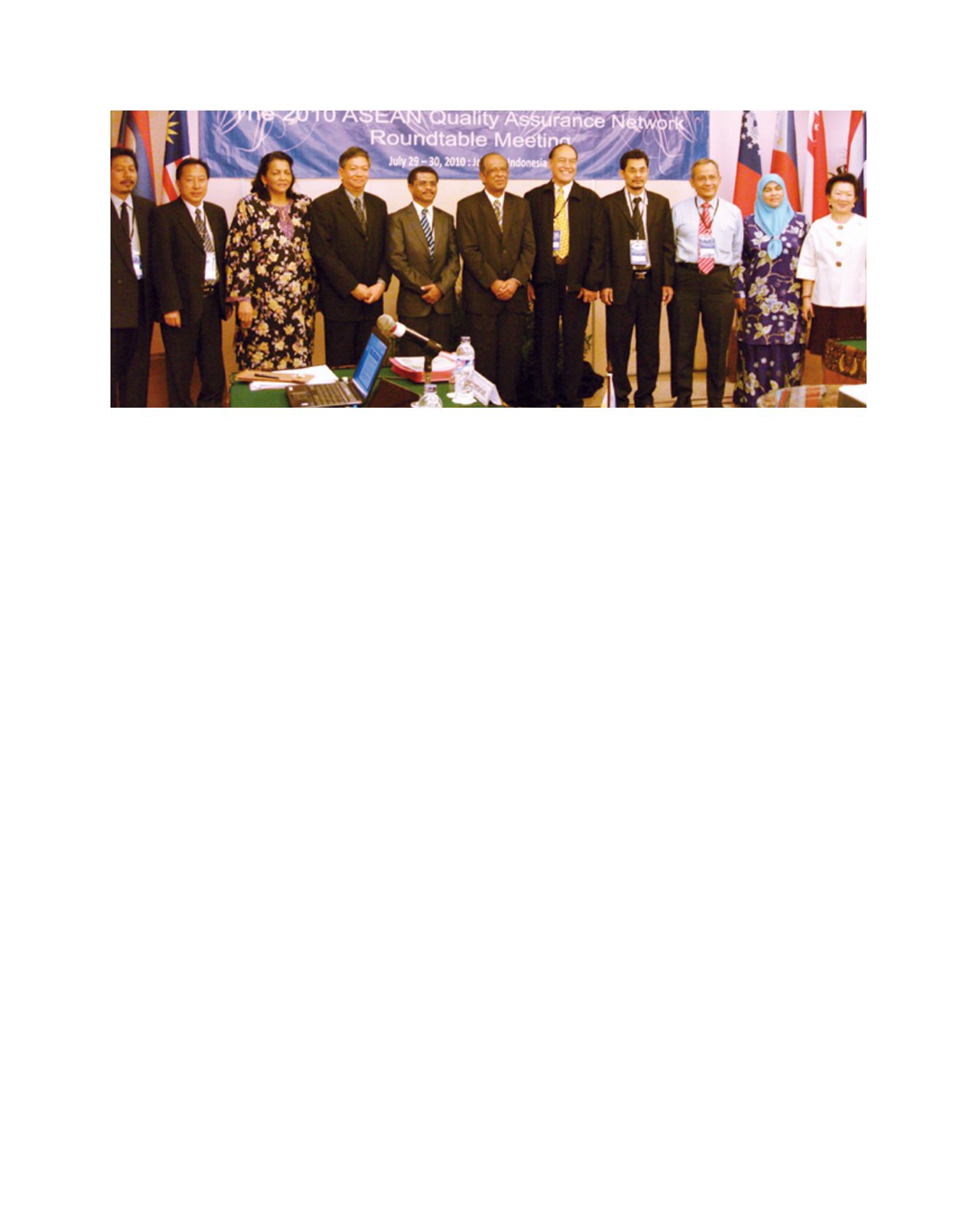

[
] 67
capital and creating a dynamic education climate. The
SEAMEORIHED roadmap for the harmonization process in
higher education in Southeast Asia is designed to reinforce
the three pillars of the agendas for the ASEAN Community
in 2015, which foster SD. Our attempt to create a common
space for HE in SEA has been advanced by identifying and
implementing the following areas:
• Student and staff mobility
• ASEAN Quality Assurance Framework
• Southeast Asia Credit Transfer System
• Leadership development programme
• E-learning and mobile learning
• ASEAN research clusters.
These are the mechanisms prioritized by SEAMEO
RIHED to establish a Southeast Asian Higher Education
Area (SEAHEA), which will be the overarching infra-
structure to support HESD. They will help create a highly
skilled workforce to serve cross-border employability,
ongoing productivity and stable economic growth.
Student and staff mobility
In 2009, SEAMEO RIHED developed the M-I-T (Malaysia-
Indonesia-Thailand) Student Mobility Pilot Program,
which is our attempt to overcome the limitations of previ-
ous projects (which were restricted to selected HEIs) by
working with governments and HEIs at a regional level.
This project has impacted positively on both academic and
socio-cultural development in the region, helping to nurture
a sound and innovative environment for promoting HESD.
ASEAN Quality Assurance Framework
The ASEAN Quality Assurance Network was initiated in
2008 to share good practices of quality assurance (QA),
recognize HE qualifications and facilitate cross-border
mobility. This mechanism ensures a standardized HE
system and educational quality. The goal of developing
the ASEAN QA Framework will help shape and estab-
lish HESD in the region.
whole region needs to be defined and clarified so that each nation will
head in the same HESD direction.
Stage 2: Cooking HESD
The process of implementing HESD needs involvement both at decision-
making and higher education institution (HEI) levels for policy synergies
and common practices. Funding sources, independent bodies, profes-
sional bodies and communities must participate as stakeholders in the
process to ensure the alignment of HESD and local and regional context.
Sharing of responsibility among ministries of education, environment,
commerce, state, health and culture is crucial to combine expertise and
resources to build better quality HESD. Furthermore, sharing good prac-
tices of curriculumdevelopment and pedagogicmethods among regional
HEIs is another way tomake HESD sustainable. An informed societywith
various relevant stakeholders could collaboratively assist in developing
realistic strategies to build human capacity equippedwith knowledgeable
and capable leadership. The capacity-building process can occur through
academic training as well as teaching and learning. Financial andmaterial
resources for higher education must be developed by national and local
governments and the development of curricula, materials and human
resources, including administration, must be funded at both levels.
Stage 3: Serving HESD
In order to deliver HESD to the public effectively and successfully, the
most important factor is popularity. HESD should use ‘bottom-up’ prac-
tices by promoting the concept of sustainability in popular culture and
government policies. For instance, His Majesty the King of Thailand’s
sufficiency economy philosophy,
3
which emphasizes SD, has been
shaped and encouraged at both local and national levels. Its practices
of moderation, reasonableness and self-immunity are woven into Thai
people’s daily lives. Moreover, the adoption of the philosophy into the
HE curriculum by some Thai HEIs
4
shows remarkable outcomes at
government level. In order to bring about major changes in HESD, state
and community need to nurture a climate of creativity and safety that
allows risk-taking to achieve new educational and sustainability goals.
The role of SEAMEO RIHED in HESD
In an effort to promote HE cooperation in the SEA region, SEAMEO
RIHED’s activities benefit SD goals in terms of producing qualified human
The 2010 ASEAN Quality Assurance Network roundtable meeting, 29-30 July 2010, Jakarta, Indonesia
Image: SEAMEO RIHED
















